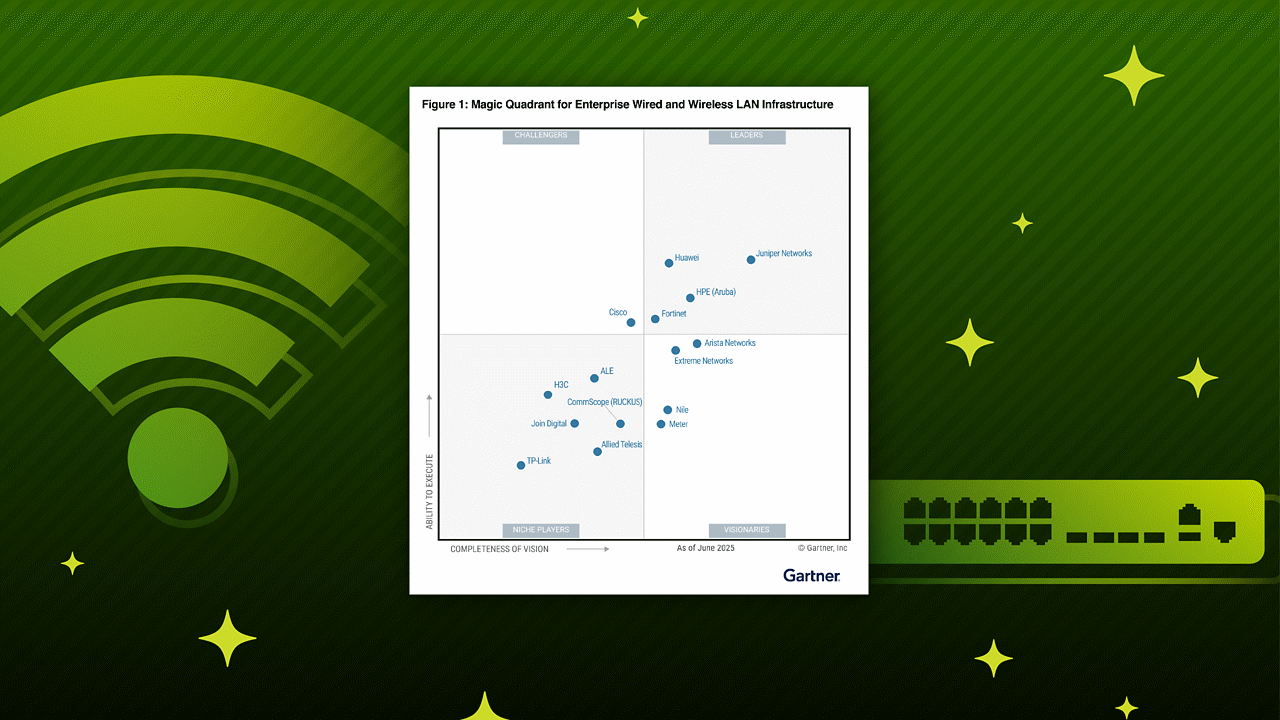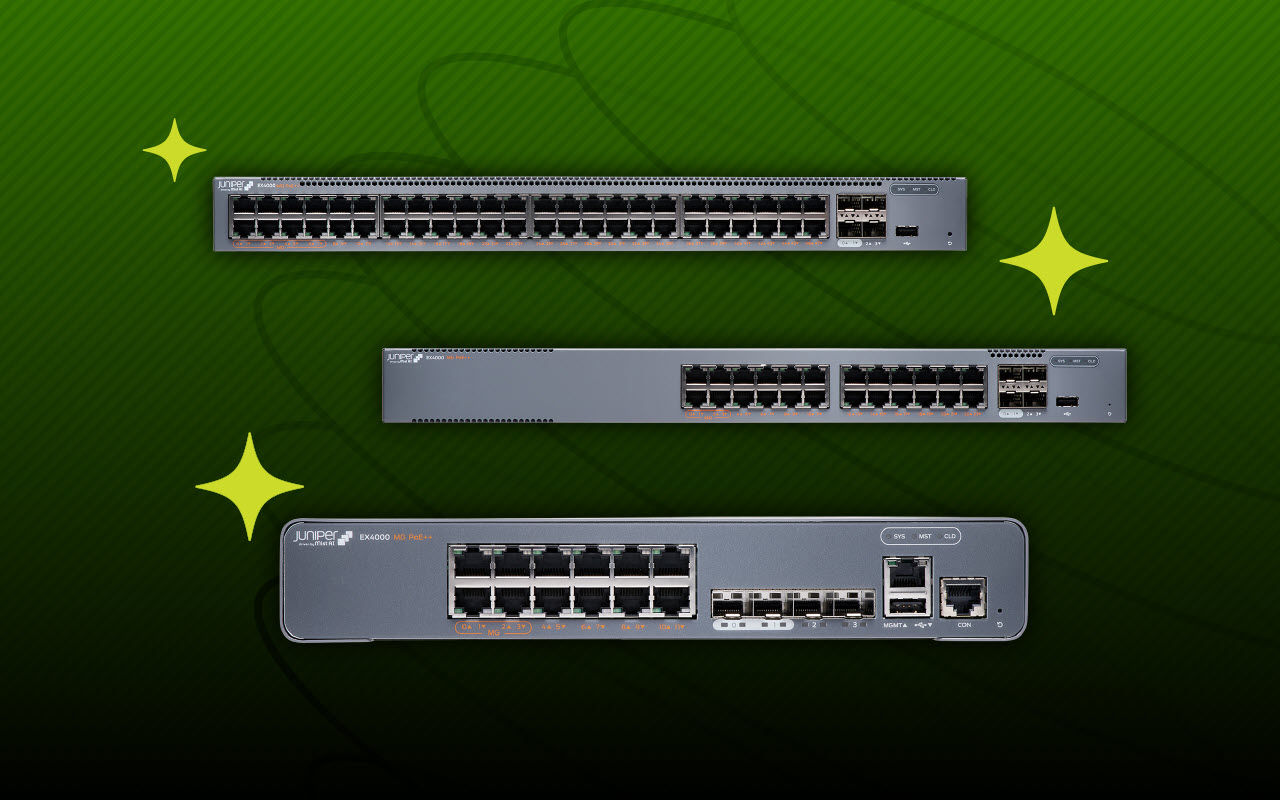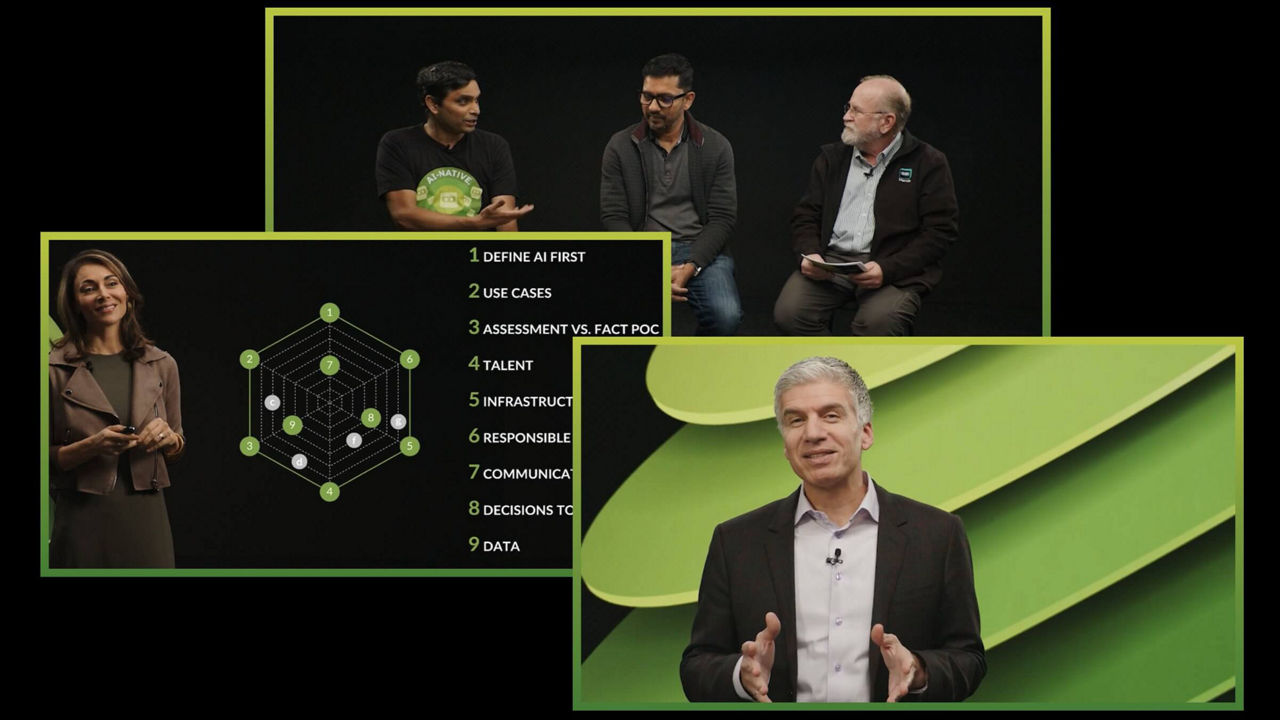5G Network Slicing with Juniper SMO and RIC

This demo showcases how Juniper Service Management and Orchestration (SMO) along with Juniper RAN Intelligent Controller (RIC) can implement RAN Slice SLA Assurance use case in a O-RAN compliant 5G network.
You’ll learn
How network slicing works
The benefits of Juniper Service Management and Orchestration
Who is this for?
Transcript
0:00 [Music]
0:05 5g creates new opportunities for
0:07 communication service providers beyond
0:09 traditional consumer applications
0:12 from factories served by wireless
0:14 controlled robots to retailers offering
0:16 new ar and vr experiences
0:19 to self-driving cars
0:21 and enterprises benefit the most from
0:23 improved productivity agility and
0:25 scalability that 5g provides
0:28 service providers have typically had
0:30 limited network capability to tune
0:32 services for specific needs
0:34 and this challenge only increases with
0:36 new 5g network services
0:38 with the use of network slicing multiple
0:41 independent end-to-end logical networks
0:44 can be created on demand and run on a
0:46 shared physical infrastructure
0:48 each slice is built for a specific
0:50 communication service and can provide
0:52 prescribed quality of service sla while
0:55 being isolated and secure
0:57 a network slice can span across multiple
1:00 parts of the network and run network
1:02 functions distributed in a multi-cloud
1:04 environment
1:05 implementing network slicing would
1:07 require a service management and
1:08 orchestration or smo capability that
1:11 consolidates orchestration and
1:13 management functionalities across the
1:15 entire network
1:16 juniper service management and
1:18 orchestration or smo is a multi-cloud
1:21 multi-domain and multi-tenant platform
1:24 it implements oran in 3gpp requirements
1:27 and interfaces while also supporting
1:30 end-to-end service orchestration across
1:32 the ram transport network and core
1:34 network
1:35 the juniper smo is designed for
1:37 end-to-end network slicing and
1:39 disaggregated oran orchestration
1:42 the cloud native microservices
1:43 architecture supports standard apis and
1:46 data models to allow for integration
1:48 with third-party systems
1:50 juniper has further strengthened its smo
1:53 capabilities with the integration of the
1:55 industry's leading ran intelligent
1:57 controller or ric
1:59 the ric is a specialized form of
2:01 software-defined network controller for
2:03 the radio access network that brings
2:05 intelligence agility programmability
2:07 extensibility and openness to the ram
2:11 it allows for enhanced qoe lower tco and
2:15 innovative use cases leveraging aiml
2:17 capabilities
2:19 in this demonstration we'll give an
2:21 overview of the technology and
2:23 capabilities for juniper service
2:24 management orchestration and ran
2:26 intelligent controller
2:28 we'll cover network slice preparation
2:31 including infrastructure cloud
2:32 onboarding and slice template design
2:35 network slice commissioning including
2:37 slice creation and activation
2:40 network slice operations to ensure rand
2:42 slice sla assurance
2:45 log into the platform and start the
2:47 infrastructure preparation phase
2:49 in the infrastructure preparation phase
2:51 there's a topology view where a user can
2:54 manage and monitor a nationwide network
2:56 of clouds cell sites and inner cloud
2:58 links
3:00 the platform can manage large-scale
3:01 infrastructure for service providers as
3:04 well as smaller scale use cases such as
3:06 enterprise private mobile networks as
3:08 represented here
3:10 in the infrastructure map view the
3:12 clouds and cell sites are shown by
3:14 geographic location
3:16 juniper smo contains a catalog of
3:18 network function descriptors and network
3:20 slicing related templates
3:23 network functions are the basic building
3:25 blocks for network slicing
3:27 a network slice subnet is a domain
3:29 specific segment of an end-to-end slice
3:32 for example the ran and core network
3:34 domains
3:35 the network slice template catalog
3:37 contains end-to-end service templates
3:40 each composed of multiple domain
3:42 specific slice subnets
3:44 for example a network slice template may
3:46 contain ran transport network and core
3:49 network slice subnet templates
3:51 communication service defines the
3:53 intent-based use case that the operator
3:55 offers to its customers which is
3:57 realized by network slice and the
3:59 associated sla
4:01 a user can create an oran slice subnet
4:04 template in the smos design studio
4:07 interconnected network functions can be
4:09 added and complex topologies per network
4:11 requirement can be designed for example
4:14 an oran network slice subnet template
4:16 can include an odu ocu and near rt ric
4:22 similarly the design studio also allows
4:24 for designing end-to-end network slice
4:26 templates by combining domain-specific
4:28 network slice subnet templates
4:31 in the network slice commissioning phase
4:33 an enterprise could order a
4:34 communication service for its private 5g
4:36 network
4:37 this would then be realized by the
4:39 deployment of a network slice instance
4:41 accessible from its production sites and
4:43 offices
4:44 during the communications service order
4:46 the user specifies different runtime
4:48 attributes including selection of the
4:51 cell sites that will be enabled for this
4:52 communication service
4:54 the smo has now deployed an end-to-end
4:56 network slice for our private 5g
4:58 enterprise use case
5:01 we have just presented the juniper
5:02 service management and orchestration
5:04 platform and now let's dive into the
5:06 radio access network with the juniper
5:08 ran intelligent controller or rick and
5:11 its x apps and r apps for rand slice sla
5:14 assurance
5:15 the rand slice assurance r app
5:17 continuously monitors the current slice
5:19 usage for the private 5g enterprise
5:21 slice by collecting slice slice-specific
5:23 performance metrics
5:25 if it detects an sla violation the rf
5:28 immediately initiates corrective action
5:30 by making appropriate slice-specific
5:32 configuration changes and updating the
5:34 policy on the rand slice assurance x app
5:37 the x-app takes care of propagating the
5:39 configuration changes to the appropriate
5:41 cus and d-us
5:43 the x-app monitors the changes and sends
5:45 back acknowledgments to the r app to
5:47 confirm that the slice usage and
5:49 utilization levels are now meeting the
5:51 specified sla levels
5:53 ranslice sla assurance x apps can be
5:56 deployed on near rt rix
5:58 sla assurance monitoring screen provides
6:01 operators real-time monitoring of rand
6:03 slice assurance
6:05 the top graph shows the cumulative slice
6:07 utilization across all g node b's and
6:09 all rigs compared to the global slice
6:12 sla objective
6:14 the yellow line represents the current
6:15 usage and the green line represents the
6:18 target sla usage
6:20 the initial configuration of the slice
6:22 cannot meet the current traffic pattern
6:24 therefore the cumulative usage is well
6:27 below the sla objective
6:30 the x apps will detect the unused slice
6:32 capacity on some of the gnode b's and
6:34 reallocated to the overloaded genode b's
6:38 for example during the workday the gnode
6:40 b's on the production floor may be
6:42 overloaded while gnode b's in other
6:44 areas may have low traffic utilization
6:47 the ric and x apps will detect such
6:49 unbalance and allocate slice throughput
6:51 in function of local demand across all g
6:54 node b's
6:55 the bottom left graph shows the high
6:57 level policy guidance from non-rt rick
6:59 to the near rt rex via the oran a1
7:02 interface
7:04 the goal is to distribute the total
7:05 slice capacity across the near rt rex
7:08 the bottom right graph shows the policy
7:10 enforcement and control between the near
7:12 rt rix and gnode b's over the oran e2
7:15 interface
7:17 it shows fine-grained slice capacity
7:18 distribution across the genode b's by
7:21 the near rt rick for simplification
7:23 purposes only two g-node b's are shown
7:26 on this graph
7:28 in the top graph the rick applications
7:30 detect the unused slice capacity on some
7:32 of the genode b's
7:34 reallocate to the overloaded genode b's
7:37 when the slice capacity allocation is
7:39 done properly it will reach to this sla
7:42 objective line
7:44 now there was a sudden change in the
7:46 traffic pattern
7:47 for example the workday has finished and
7:50 people are moving away from the
7:51 production floor
7:52 so the genode b's that were previously
7:54 overloaded become unused and other gnode
7:57 b's are now overloaded
8:00 the rest of the demo will show how the
8:02 ric and x apps detect this sudden
8:04 traffic pattern change and reallocate
8:06 the total slice throughput to the newly
8:08 overloaded g-node bs
8:10 the goal always is to meet the total
8:12 slice utilization sla as shown on the
8:14 top graph
8:16 the rick and xapps and r apps took sla
8:19 assurance actions against the traffic
8:21 pattern chains that had caused an
8:22 imbalance in the rand network
8:23 utilization and reconfigured the rand to
8:26 achieve the sla objective
8:29 to summarize through service management
8:31 and orchestration ran intelligent
8:33 controller and ran slice sla assurance
8:36 r-app and x-app juniper is leading the
8:38 industry in end-to-end network slice
8:41 orchestration and assurance on oran
8:43 compliant 5g networks































